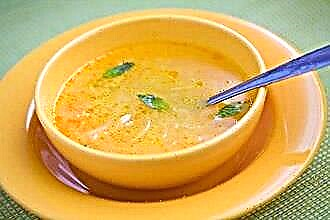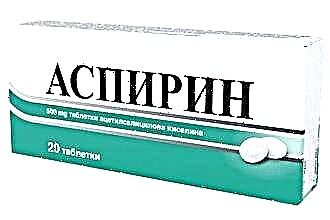Violation of mucus secretion in the nasal passages leads not only to uncomfortable sensations, but also to a decrease in local immunity. The inner surface of the nose is lined with ciliated epithelium, which should cleanse and moisturize the air entering the ENT organ. But in the absence of secretion on the surface of the mucous membrane, air filtration is disrupted, which increases the risk of infection in the respiratory tract. Home treatment of dry nose primarily involves restoring the activity of goblet cells that produce viscous secretions.
 To normalize the microflora in the upper respiratory tract, doctors recommend using moisturizing solutions, ointments, oils and herbs. As practice shows, sanitation of the nasopharynx, inhalations and local compresses help to restore the functions of the ciliated epithelium and moisturize the mucous membrane.
To normalize the microflora in the upper respiratory tract, doctors recommend using moisturizing solutions, ointments, oils and herbs. As practice shows, sanitation of the nasopharynx, inhalations and local compresses help to restore the functions of the ciliated epithelium and moisturize the mucous membrane.
Today's publication will discuss the simplest and most effective methods of dealing with dry nasal disease.
Causes of dry nose
The inner surface of the nasal cavity is covered with ciliated epithelium, which contains many small cilia. They are completely immersed in mucus, which is produced by unicellular glands - goblet cells. In the absence of inflammation, the cilia constantly oscillate, as a result of which the viscous secretion moves from the nasal cavity to the nasal passages.
Malfunctions of the goblet cells lead to a decrease in the amount of viscous secretion on the surface of the nasal mucosa. Dysfunction of the unicellular glands can be caused by:
- scleroma of the nose;
- autoimmune diseases;
- atrophic rhinitis;
- allergic reaction.
Before treating the nose with moisturizers, you need to determine the true cause of the drying out of the mucous membrane. Inadequate therapy in some cases leads to complications and deterioration in health. In particular, irrational treatment of atrophic rhinitis is fraught with purulent inflammation, tissue necrosis and abscess.
Treatment principles
Treating your nose at home involves a variety of physiotherapy treatments. Regular irrigation of the ciliated epithelium with moisturizing agents helps to restore the activity of goblet cells and, accordingly, moisturize the nasopharynx. Absolutely all methods of treating dry nose are aimed at:
- intensive moisturizing of the ciliated epithelium;
- elimination of dry crusts in the nasal canals;
- restoration of the activity of goblet cells;
- normalization of mucociliary clearance;
- increased local immunity.
Late treatment leads to the formation of cracks in the mucous membrane and, as a result, nosebleeds.
The therapeutic effect largely depends on the regularity of the treatment. To achieve normal hydration of the mucous membrane and restore the functions of unicellular glands in the epithelium, physiotherapy procedures will have to be performed 3-4 times a day for at least a week.
General recommendations
How to moisturize the nasal mucosa without using medication? An unpleasant symptom can be eliminated only through intensive moisturizing of the ciliated epithelium. The subsequent restoration of the hydrolipid balance in the tissues will contribute to the activation of the functions of the goblet cells and an increase in local immunity.
Compliance with the treatment regimen contributes to the speedy recovery and elimination of discomfort in the nasal cavity:
Normalization of the drinking regime
Dehydration is one of the key causes of goblet cell dysfunction. To replenish the lack of moisture in the body and normalize the hydrolipid balance, it is recommended to use throughout the entire period of treatment:
- mineral water (without gas);
- warm milk with honey;
- liquid soups;
- freshly squeezed juices;
- rosehip decoctions;
- herbal teas.
Important! It is advisable to consume at least 1.5 liters of warm alkaline drink per day.
It should be understood that not all drinks make up for the lack of fluid in the body. For example, alcohol and carbonated drinks disturb the body's water-salt balance. Their regular use entails dehydration and, as a result, dysfunction of the glands of internal and external secretion.
Air humidification
 Humidification of the mucous membrane is facilitated by an increase in the degree of humidity in the room to at least 65%. To achieve the necessary conditions, you can use special humidifiers or air conditioners with a humidification function.
Humidification of the mucous membrane is facilitated by an increase in the degree of humidity in the room to at least 65%. To achieve the necessary conditions, you can use special humidifiers or air conditioners with a humidification function.
In the absence of special equipment, it is recommended to hang wet towels, pillowcases and other things in the room. Evaporation of moisture from their surface will allow you to achieve the optimal level of humidity in the room.
If dry nose is associated with septic inflammation of the ENT organs, you can spread slices of chopped garlic and onions in the room. As the vegetables dry up, they will release phytoncides into the atmosphere, which have a pronounced antiseptic and anti-inflammatory effect.
Folk remedies
Moisturizers not only normalize the function of the submucous layer in the nasopharynx, but also increase local immunity. As the amount of moisture in the body decreases, the mucus that forms on the surface of the nasal passages thickens. In this regard, the cilia on the surface of the epithelium cannot cope with the transport of viscous secretions, which leads to a violation of mucociliary clearance. A congestion of mucus in the nasal cavity increases the risk of septic inflammation. To reduce the viscosity of mucus and normalize the mucociliary apparatus, it is recommended to use:
Vegetable oils
You can remove crusts in the nose and moisturize the mucous membrane with the help of vegetable oils. Regular lubrication of the nasal passages with oily liquids contributes to the formation of a protective film on their inner surface. It prevents not only moisture evaporation, but also the penetration of infectious agents into tissues. Some of the best moisturizing oils include:
- almond;
- peach;
- mustard;
- coconut;
- olive;
- sesame.
You should not use mustard oil if there are wounds on the inner surface of the nasal passages, as this will lead to irritation and swelling of the tissues.
Before going outside, it is recommended to instill 1-2 drops of oil into each nasal canal. Regular use of oily liquids will reduce nasal discomfort, normalize water-salt metabolism and strengthen local immunity.
Nasal lavage (nasal irrigation)
Nasal lavage - irrigation of the nasopharyngeal mucosa with medicinal solutions in order to eliminate inflammatory reactions and dryness. Therapeutic procedures help flush out dust, allergens and infectious agents from the nose that can cause inflammation of the upper respiratory tract. To restore water-salt metabolism in tissues, it is recommended to rinse the nose with the following means:
- saline solution: dissolve ½ tsp. salt in 250 ml of boiled water;
- herbal decoction: pour 1 tbsp. chamomile flowers 1.5 liters of water, then boil and strain.
When carrying out a physiotherapy procedure, it is advisable to follow one rule: immediately after rinsing the nose, lubricate the mucous membrane with moisturizing ointments or instill 1-2 drops of aloe juice into the nose. This will prevent the ciliated epithelium from drying out and cracking its surface.
Local compresses (cotton turundas)
 Local compresses are one of the most effective methods for eliminating dry crusts and dry nose. The cotton turunda soaked in the solution should be inserted into the nasal passages for 30-40 minutes at least 3-4 times a day. With regular application of compresses, the secretion of nasal mucus is normalized, and local immunity also increases.
Local compresses are one of the most effective methods for eliminating dry crusts and dry nose. The cotton turunda soaked in the solution should be inserted into the nasal passages for 30-40 minutes at least 3-4 times a day. With regular application of compresses, the secretion of nasal mucus is normalized, and local immunity also increases.
To achieve the desired result, when using cotton turunda, you need to take into account the following points:
- for setting a compress, it is better to use sterile cotton wool;
- you can moisten cotton swabs in herbal decoctions, oils or ointments ("Rescuer", "Fleming's ointment", "Vitaon");
- after the procedure, it is advisable to instill vegetable oils into the nose.
Ointments and oils help not only moisturize tissues, but also restore microflora in the respiratory tract. This, in turn, has a beneficial effect on local immunity and prevents viral and bacterial infections from entering the respiratory tract.
Conclusion
Treatment for dry nasal cavity consists of moisturizing solutions, creams, oils and saline solutions. Sanitizing procedures allow you to wash out viscous mucus and pathogenic particles not only from the nasal passages, but also from the paranasal sinuses. Physiotherapy can help prevent airway inflammation and restore the function of the glands that produce nasal mucus.
The effectiveness of home treatment depends on the regularity and correctness of the therapeutic measures. To quickly restore mucociliary clearance and water-salt metabolism in tissues, it is recommended to combine nasal irrigation with local compresses and instillation of vegetable oils into the nose.



